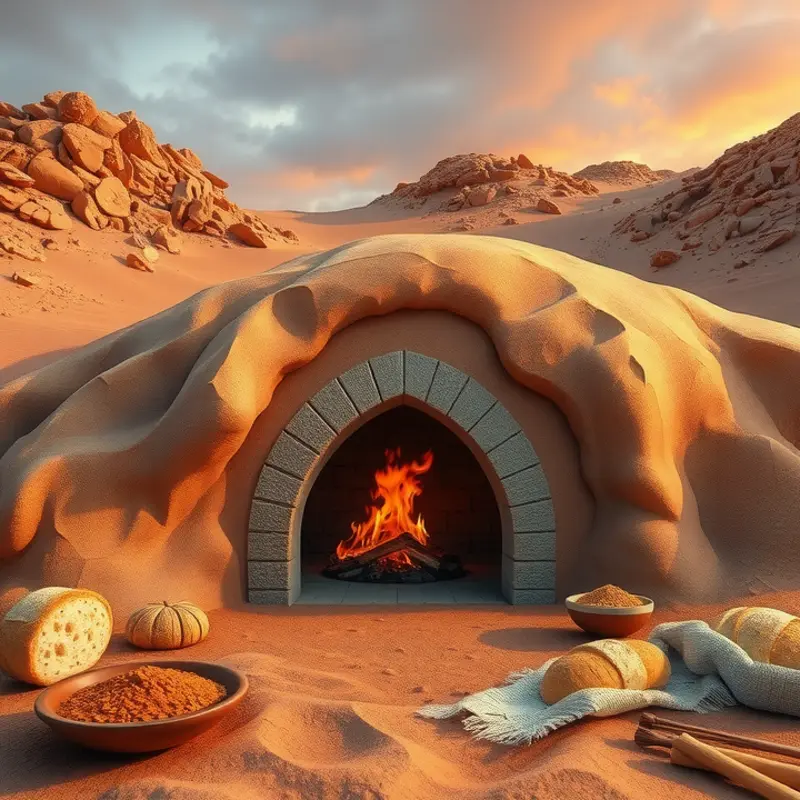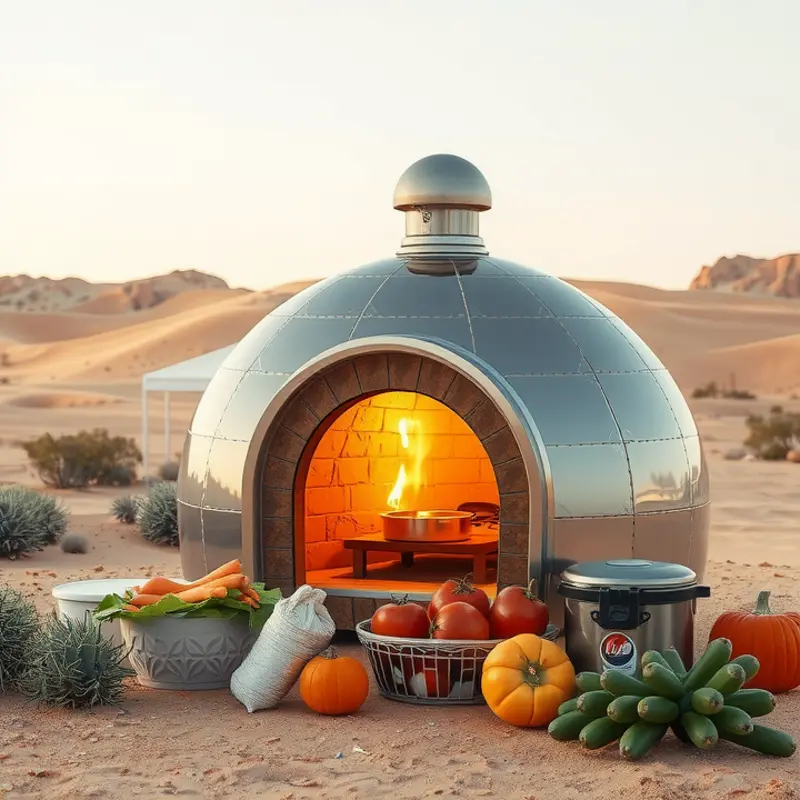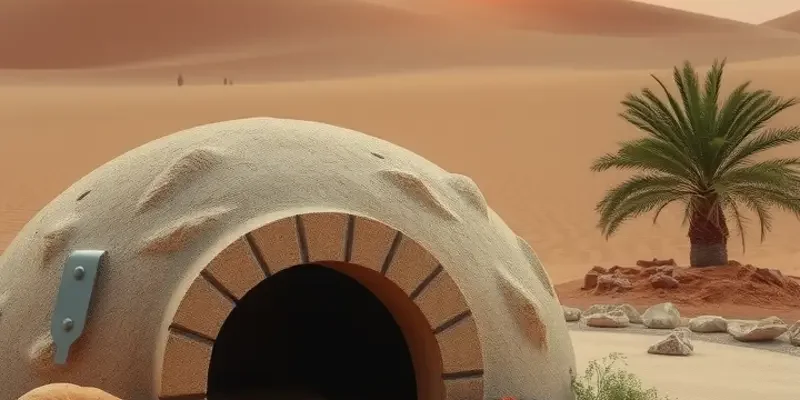From the vast dunes of the Sahara to the arid landscapes of the American Southwest, desert cooking reflects a remarkable adaptability to extreme environments. This article takes you on a flavorful journey through unique culinary methods employed in desert regions, showcasing the ingenuity and resourcefulness of communities that thrive in these seemingly inhospitable areas. Each cooking method not only nourishes body and soul but also tells stories of resilience, creativity, and community that highlight the essence of these cultures.
Ancient Techniques: Cooking with Earth and Fire

In the vast and sun-baked stretches of desert, traditional cooking methods are as enduring as the dunes. Among these, the underground oven—commonly known as the tandoor—and open-fire grilling stand out for their ingenuity and historical significance. These time-honored techniques not only preserve the flavors of the desert but also strengthen familial and community bonds.
The tandoor, a cylindrical clay oven, has been used across many desert cultures for centuries. Historically, it was often buried underground to retain heat and maintain a stable cooking environment, crucial in extreme climates. The preparation of a tandoor involves a precise blend of clay, often mixed with natural fibers to withstand the intense heat, ensuring durability.
Cooking with a tandoor involves not just skillful preparation but a deep understanding of timing and temperature, aspects that are essential in any desert culinary tradition. One of the quintessential dishes cooked in a tandoor is lamb, which draws out the flavors both tenderly and robustly.
To prepare lamb in a tandoor, the meat is marinated in a mixture of yogurt, ginger, garlic, and a medley of spices such as cumin, coriander, and cardamom. This marinade not only tenderizes the meat but imbues it with an aromatic blend that permeates deeply during cooking.
The process begins early, often before dawn, with the heating of the tandoor. Wood or charcoal is used to raise the internal temperature to upwards of 900°F (480°C). Once heated, the coals are spread across the bottom, and the lamb, skewered or placed on a metal rack, is lowered into the aromatic depths. Sealed with a lid, the tandoor acts as both a grill and an oven, enveloping the lamb in intense, even heat, resulting in an exterior char that seals in the juices.
Open-fire grilling, while more exposed to the elements, is another technique widely practiced under the desert sun. This method is more than just cooking; it’s a communal event. Families and neighbors gather around the flames, sharing stories and lore, fostering a sense of unity.
Grilled flatbreads, often a staple, accompany these gatherings. Dough made from flour, water, and a pinch of salt is quickly mixed and patted into discs. These are placed directly on stones heated in the open fire, resulting in breads with a crisp exterior and a soft, airy inside. The simplicity of these breads, combined with the richly flavored lamb, creates a deeply satisfying meal.
For more insights into culinary techniques that transcend cultural and climatic boundaries, discover various global cooking methods that impact local flavors and traditions here: Culinary Influences Through Global Trade.
These ancient cooking techniques embody the ingenuity of desert communities. They serve as both a necessity and an art form, reminding us of the profound relationship between environment and cuisine.
Modern Innovations: Culinary Meets Conservation

As the sun casts its relentless rays over the desert, modern chefs have found inspiration in its warmth and light. Traditional techniques are being reimagined with an emphasis on sustainability, showcasing a profound respect for culture while embracing contemporary flavors.
One of the most innovative adaptations is the use of solar ovens. Originally developed as a sustainable cooking method, solar ovens have become a culinary tool that not only conserves energy but also elevates the taste of desert dishes. These ovens harness solar energy to cook food at lower, steadier temperatures, which can enhance flavors and retain nutrients. Chefs are experimenting with this method to breathe new life into age-old recipes.
Consider the solar-baked “Berber bread,” a staple in North African cuisine. By baking it in a solar oven, this bread achieves a distinctive texture, with the crust attaining a delicate balance between crispness and chewiness. The interior remains soft and fragrant, a subtle nod to its traditional roots while highlighting a reduction in ecological footprint.
Local ingredients, pivotal to the identity of desert cuisine, are also at the forefront of this culinary evolution. The prickly pear cactus, for instance, is being rediscovered by chefs who seek to introduce its sweet yet tart flavor to contemporary palates. By integrating this cactus into salads or crafting prickly pear jams, it shines as a sustainable flavor powerhouse that both honors and extends local culinary traditions.
Another example is the use of mesquite flour, derived from the pods of the mesquite tree. Its distinctively nutty and sweet flavor adds depth to baked goods and savory dishes alike. Mesquite flour can transform a simple cake or biscuit into a complex, earthy treat, merging the ancient with the modern in a dance of taste and texture.
Incorporating local fauna also plays a crucial role in sustainable desert cooking. Chefs are developing dishes using locally sourced game like rabbit or quail, seasoned with native herbs. Not only does this practice preserve biodiversity, but it also supports local economies and reduces the carbon footprint associated with transporting meats from afar.
Adaptations to contemporary palates are achieved in part through mindful culinary practices. The emphasis is on reducing waste and maximizing flavor using minimal resources. For those curious about optimizing their kitchen at home, integrating sustainable practices can start small, with eco-smart kitchen storage techniques that extend the life of local ingredients and minimize waste.
Through these innovative approaches, modern chefs in desert regions are not only preserving their culinary heritage but are also paving the way for a sustainable future where tradition and modernity coexist deliciously under the sun.
Final words
Desert cooking methods offer a fascinating glimpse into the resilience and creativity of cultures thriving in extreme environments. From ancient practices that have endured through generations to modern innovations embracing sustainability, these culinary techniques showcase an invaluable blend of tradition and adaptation. Embracing these cooking methods not only provides a delicious exploration of taste but also a deeper appreciation for the cultures behind them. Each dish serves as a testament to human ingenuity, creativity, and an enduring connection to the earth, making desert cooking a unique and essential part of our global culinary heritage.








